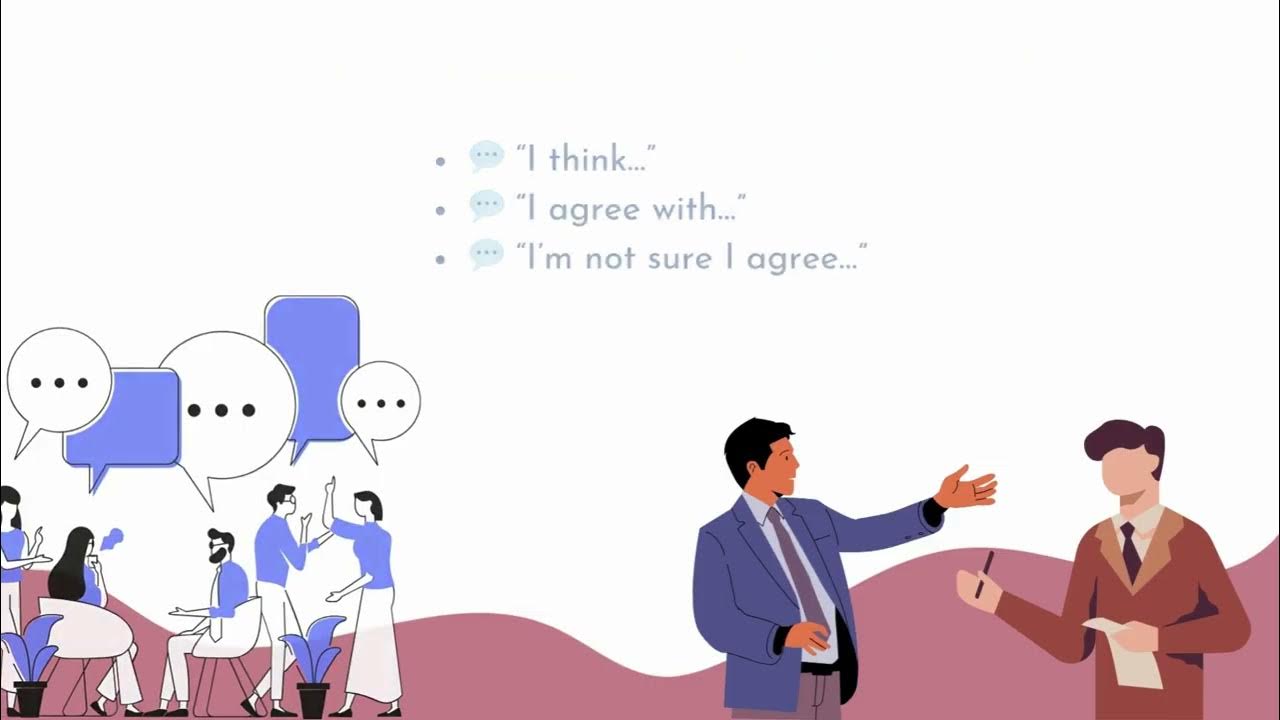The Digital Self | Understanding the Self | Unit 2, Lesson 5
Summary
TLDRThis lesson explores the concept of the 'digital self,' discussing how online behaviors shape our identities. It highlights the rise of internet use, the phenomenon of selective self-presentation on social media, and the impact of the disinhibition effect, where anonymity fosters risky online behaviors. The lesson emphasizes the importance of setting boundaries, using the 'triple filter test' to guide online sharing, and managing digital footprints. It also addresses the psychological effects of social media, including FOMO and mental health concerns, while promoting mindful, intentional engagement to maintain a healthy digital presence.
Takeaways
- 😀 The digital self is an extension of our real identity, influenced by social media and online interactions.
- 😀 People use selective self-presentation and impression management to craft positive online personas.
- 😀 The internet has become a platform for self-expression, but it also comes with risks like over-sharing and the fear of missing out (FOMO).
- 😀 The disinhibition effect in the digital world encourages more self-disclosure, but also leads to negative behaviors like cyberbullying.
- 😀 Online self-presentation, such as confessional blogs, can be cathartic and help individuals reflect and release emotions.
- 😀 Social media can boost self-esteem through validation (likes, shares), but it also raises concerns about privacy and digital footprints.
- 😀 The internet is a tool that can have both positive and negative effects, depending on how it's used and the information shared.
- 😀 Smart sharing involves asking yourself if a post is true, kind, and useful before sharing it online or offline.
- 😀 Practicing smart sharing helps reduce online 'pollution' and ensures content shared is meaningful and appropriate.
- 😀 Digital content, such as memes or personal stories, should be evaluated for its long-term impact and appropriateness before sharing.
- 😀 Limiting social media use and setting boundaries is essential for mental well-being, and taking breaks can improve one's overall health.
Q & A
What is the concept of 'selective self-presentation' mentioned in the script?
-Selective self-presentation refers to the process by which individuals manage how they present themselves online, curating information about themselves to shape how others perceive them, often influenced by likes, shares, and comments on social media.
How does the script differentiate between personal identity and social identity?
-Personal identity refers to the unique aspects of an individual that set them apart from others, while social identity is how a person is recognized and identified by their social group.
What is the 'disinhibition effect' discussed in the transcript?
-The disinhibition effect refers to the phenomenon where people feel freer to share personal information or act differently online due to the anonymity and lack of face-to-face interaction in digital spaces.
What is the danger of oversharing online?
-Oversharing online can lead to the spread of personal information that may affect one's privacy and well-being, and it can also create unintended negative consequences like cyberbullying or the formation of harmful online reputations.
How does 'FOMO' (fear of missing out) impact online behavior?
-FOMO is the fear of missing out on important updates or experiences shared by others on social media. It can lead individuals to feel pressured to stay constantly updated and share content to maintain social engagement.
What are the benefits of online self-expression, as mentioned in the script?
-Online self-expression can provide a sense of catharsis, as it allows individuals to reflect, express emotions, and seek validation, especially when shared with a select audience or even strangers.
What is the 'triple filter test' for responsible sharing mentioned in the script?
-The triple filter test involves asking three questions before sharing content: 1) Is it true? 2) Is it kind? 3) Is it useful? This helps ensure that what is shared is thoughtful, non-harmful, and valuable.
Why is it important to consider whether a post is appropriate before sharing it online?
-Considering the appropriateness of a post helps avoid sharing content that may be harmful, invasive, or disrespectful, such as private matters or inappropriate videos, which can have lasting negative effects.
What does the script say about the use of social media for entertainment and its potential risks?
-While social media can provide entertainment and relaxation, it also carries risks such as the spread of misinformation, cyberbullying, and the negative impact on mental health, making it important to use it responsibly.
What advice does the speaker give regarding managing social media use for mental health?
-The speaker advises taking breaks from social media when feeling overwhelmed, sticking to safer sites, limiting what is shared, and being mindful of the long-term impact of online interactions on mental health.
Outlines

Cette section est réservée aux utilisateurs payants. Améliorez votre compte pour accéder à cette section.
Améliorer maintenantMindmap

Cette section est réservée aux utilisateurs payants. Améliorez votre compte pour accéder à cette section.
Améliorer maintenantKeywords

Cette section est réservée aux utilisateurs payants. Améliorez votre compte pour accéder à cette section.
Améliorer maintenantHighlights

Cette section est réservée aux utilisateurs payants. Améliorez votre compte pour accéder à cette section.
Améliorer maintenantTranscripts

Cette section est réservée aux utilisateurs payants. Améliorez votre compte pour accéder à cette section.
Améliorer maintenantVoir Plus de Vidéos Connexes

UNDERSTANDING THE SELF: THE DIGITAL SELF

Digital Literacies and My Identities - Project Micro Teaching CALL

FEU Public Intellectual Lecture Series | Dr. Diosa Labiste | Part 1

VOCÊ PRECISA APRENDER ESSAS COISAS PARA FICAR RICO!!! | Os Sócios 237

(Don't) Know Thyself | Serial Experiments Lain Anime Discussion

How Social Media Shapes Identity
5.0 / 5 (0 votes)
